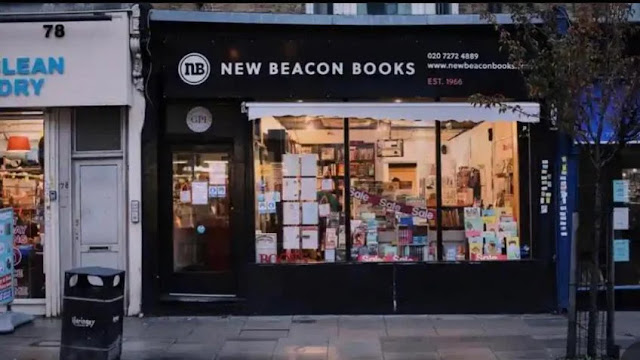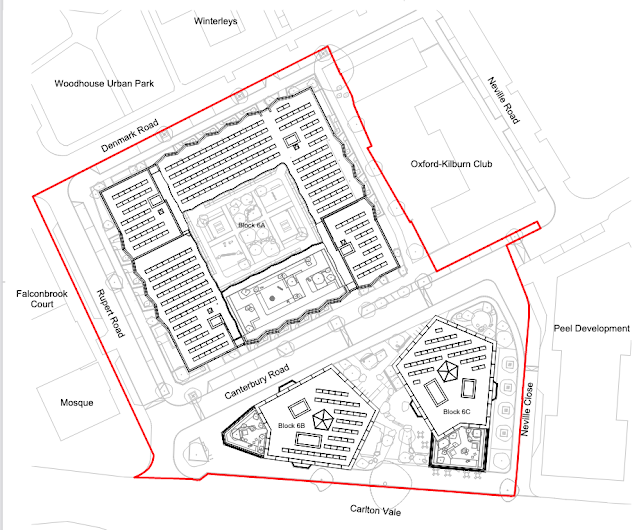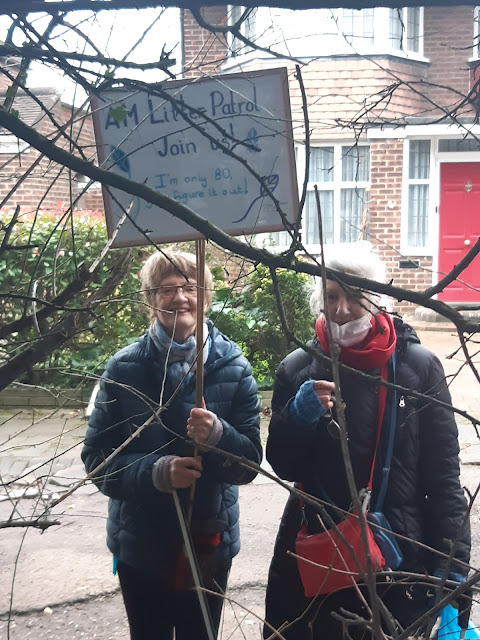The London Flood Review has
been set up to examine the flash flooding that affected many parts of the
capital in July 2021. The review seeks to better understand the extent
and causes of these floods, to assess how the drainage systems performed, and
to recommend how the increasing risks of future flooding events can be managed.
The review, which
has been commissioned by Thames Water, will play an integral part in ensuring
the company future proofs its infrastructure to protect its customers, their
communities and the environment as such severe weather events look set to
become the norm across the UK.
The review will
also play an important role in improving collaborative working between all
parties responsible for managing future flooding risks. As part of its focus,
the review will provide insights on London’s wider drainage infrastructure and
broader recommendations that could be adopted by all organisations with surface
water management responsibilities.
INDEPENDENT REVIEW INTO THE FLOODING IN LONDON ON
12 & 25 JULY 2021
Terms
of Reference
1. Why
has Thames Water commissioned an independent review?
On 12
and 25 of July 2021, London experienced extreme rainfall events that led to
extensive flooding, with more than a thousand homes and
businesses flooded, and health, social and transport infrastructure also affected. Given the scale of
the impact on its customers and local businesses, Thames Water has taken the
unusual step of commissioning an independent review into the flooding as the
organisation believes it is important to understand the root cause of the
flooding, how its assets performed and to learn lessons so the company and
other parties may better prepare for future risks, in an open and transparent
way.
This
review will also assist with Thames Water’s role (as a Risk Management
Authority) in supporting Local Authorities in undertaking their
flooding investigations as required by Section 19 of the Flood and
Water Management Act (2010). Thames Water’s ambition is that the review should
take no more than 6 months, with interim reports
published as it progresses. This timeframe is planned so that the review concludes
within a period where the findings are relevant to the
key stakeholders and also are able to inform Thames Water’s draft PR24 business plan. As such, the
review must balance the desire for comprehensive scope,
level of detail and stakeholder engagement, with the need to complete within
this timeframe.
This
will mean that the review will primarily focus on the performance of Thames
Water’s assets, within the context of other Risk Management
Authorities’ assets, and be developed using existing Thames Water models.
A Brent Council spokesperson said:
Brent Council welcomes the Independent Review into the flooding events of last summer that has been commissioned by Thames Water . We look forward to working with the review body to inform it's evidence base and to assist the review to meet its objectives.
2.
What is the aim of the independent review?
The
review has four core objectives. To:
1) Research,
understand and report on the ‘what, when, why and how’ of the two July storms
Key to the investigation is capturing as accurately
as possible what occurred, where and how customers
were affected, i.e. the number and type of properties impacted, the type of flooding (internal/external,
surface/sewer) they experienced etc. This needs to be undertaken in the context of understanding the
storms that occurred i.e., characteristics of
rainfall and also where it occurred because the impact will not be the same
across the different affected areas. This will also
identify whether there were other factors (such as high tide, time of day etc) that potentially
contributed to the flooding and what impact
they
might have had.
2) Examine
the flooding mechanisms and to consider the performance of drainage systems against design standards.
This will determine how well Thames Water’s assets performed on 12 and 25 July in accordance with the
duty set out in Section 94 of the Water Industry
Act.
The assessment should be of Thames Water’s drainage and sewerage assets in general in the affected boroughs, with a specific
focus on recent flood alleviation schemes, including
Maida Vale, Counters Creek and Westbourne Grove and their performance against their project objectives (this will include where
Thames Water has installed FLIPs and other local
flood risk management measures).
3) Consider
how changes to existing and planned drainage system works, operations and/or policies might have alleviated the flooding
and make London more resilient to future storms.
Whilst the focus of the recommendations will be on
the public sewerage system, these must be made within the context
of the interaction between the Thames Water
operated and maintained public sewerage system and third-party drainage and
flood risk management systems. The review should
highlight wider points on the future of the London’s
sewerage and drainage system and identify key opportunities that should be considered in Thames Water’s DWMP and PR24 Business
Plan, and other stakeholders’ plans and
programmes.
4) Be
as evidence based as possible.
Further
lines of inquiry may be included as raised by the participants of the review,
but as noted previously, these should not detract from the
aim of achieving the core objectives within the stated timeframe.
3. How
will the independent review be run and managed?
In
order to be properly independent, the review cannot be led by Thames Water, but
neither can it be entirely independent of Thames Water, as
Thames Water is the major provider of information and
resources for the review and will be a key recipient of its recommendations.
The
structure of the Independent review is as follows:
1. An
Independent Expert Group (‘IEG’) that will lead the review. The IEG’s role is
to:
a.
Agree the terms of reference and scope for the review, including the brief for
thecontractors, in consultation with the Strategic Stakeholder Panel
b.
Work with Thames Water to appoint the contractors to support the IEG
c.
Work with the contractors to produce the interim and final reports in
consultation with the Strategic Stakeholder Panel
d. Be
responsible for the successful outcome of the review
e.
Stand behind the findings of the review
f.
Promote the review and the dissemination of its findings, including attending
any potential scrutiny/inquiry meetings.
The
IEG will consist of three experts with industry-leading knowledge and
experience in sewerage and drainage modelling, legislation and
regulation, and flood risk management. The experts will be appointed by and paid by Thames Water, but be
otherwise independent.
A key
early stage to the review will be an assessment by the IEG of available
data/models in order to agree what gaps may exist and how best to
resolve these gaps within the time available.
2. A
Strategic Stakeholder Panel (‘SSP’) comprising representatives from the key
strategic organisations in London with a responsibility
for and interest in surface water and sewer flood
risk management. The SSP will be consulted on the scope and objectives of the
review, inputting into its course, receiving, and (where appropriate)
endorsing, promoting, and
enacting
its findings. The SSP will include senior representatives from:
a.
Greater London Authority
b.
Transport for London
c.
London Councils
d. London Drainage Engineers’ Group
e.
Environment Agency
f.
Consumer Council for Water
g.
Ofwat (as an observer)
h.
Thames Regional Flood & Coastal Committee
i.
Thames Water
The
IEG will, as a minimum, meet with the SSP at each key stage (see ‘Key
Deliverables’ below):
•
Inception meeting to discuss and agree the Terms of Reference
•
Meeting to review the work programme and agree data requirements from the SSP
and other parties
•
Review the findings of each stage of the review ahead of publication of the
interim reports
•
Review the findings of the final report and development of a non-technical
summary
3. A
contractor (Mott McDonalds) to provide the technical capability and resources
to undertake the work detailed in a brief approved by
the IEG. The contractors will be procured and funded by Thames Water, but
report to and be managed by the IEG.
4. Key Deliverables
The following
key deliverables are included to provided structure and clarity around what
outputs are required. It is intended that each stage will build on the prior
one:
•
Stage 1: Full assessment of impact of the storms, detailing the nature of the
storms that occurred and the impact (extent) of the
flooding (who and what was flooded).
•
Stage 2: Assessment of the flooding mechanisms and a technical view of where
and how flooding
occurred.
Stages
1 and 2 together will form the ‘baseline statement’ for the review:
•
Stage 3: Explanation of the performance of the sewerage system, including
stating whether the sewerage system and key flood alleviation schemes performed
to the intended levels of service.
•
Stage 4: Lessons learnt - details of where improvements to the sewerage system
and potentially third-party assets and policies may be
appropriate. To be completed by end of April
2022.
A
report will be published for each of the stages.











